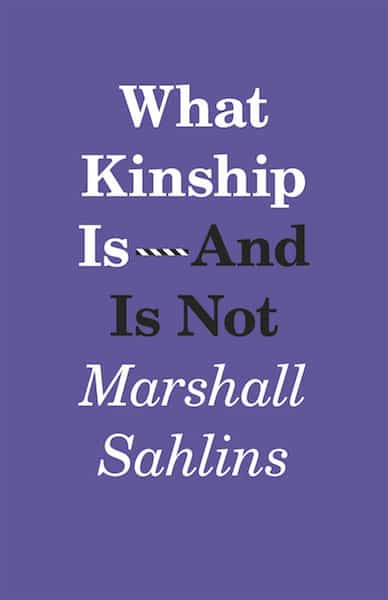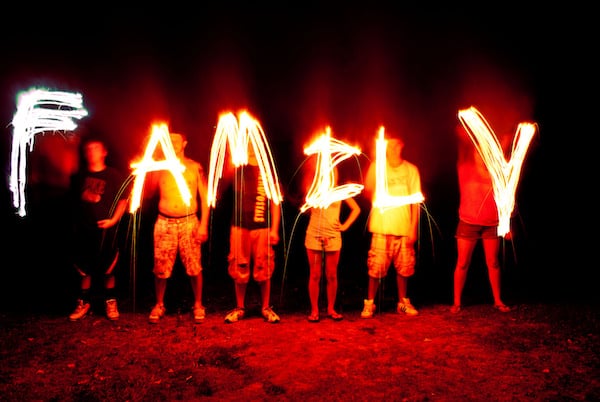To what degree can our biological, genetic and reproductive systems be considered the basis for family relationships? Marshall Sahlins divides his answer to this question into two sections for What Kinship Is – And Is Not (2013). He asserts that cultures organise the family unit differently for their community members and that property inheritance, household labour and parental responsibility is founded in social ties not biology. In his own words, Sahlins writes, “But the issue here is kinship, and therefore a more sociocentric view of what is theoretically at stake than the makeup of individual persons . . .for what is in question is the character of the relationships rather than the nature of the person” (p. 25). I agree that kinship is really a construction of a relationship shared between people and not a measured unit studied through genetic inheritance.
Yet the devil’s advocate in me wonders: how would Sahlins consider a dispute in court between adoptive parents and their adult children over the basis of kinship with one side advocating for the right to know who the birth parents were?
But first! A review of Sahlins’ book: Unafraid of anthropologists who would disagree with him, he writes: “I take the risk: all means of constituting kinship are in essence the same” (p. 29). His idea is that whether there are children protecting their aging parents, or individuals working to protect their relationships even without children of their own, our need for survival is sustained through social connection rather than biological imperative – at the very least, the social aspects of our humanity are best understood in terms of how people maintain their kinship ties differently.
 He furthers this same point, saying: “It is not simply that one acts for others or on behalf of others, but as selves are diffused among others, so is agency a function of the conjunction, located in and as the relationship it also realizes in action” (pp. 52-53). The wisdom of Sahlins’ argument is that kinship is not defined in terms of co-dependency but rather interdependence. Parents, for example, do not expect their infants to take care of them during their childhoods – but as children grow up it is expected that they will become responsible for different aspects of household maintenance in addition to their education and their work. The idea of interdependence among family members validates multiple truths, many connections that support the basis for a community to exist even when its members have geographically relocated in the form of a diaspora. Sahlins’ argument also holds true for intergenerational members of a given family that seek to transition roles from childhood to adulthood.
He furthers this same point, saying: “It is not simply that one acts for others or on behalf of others, but as selves are diffused among others, so is agency a function of the conjunction, located in and as the relationship it also realizes in action” (pp. 52-53). The wisdom of Sahlins’ argument is that kinship is not defined in terms of co-dependency but rather interdependence. Parents, for example, do not expect their infants to take care of them during their childhoods – but as children grow up it is expected that they will become responsible for different aspects of household maintenance in addition to their education and their work. The idea of interdependence among family members validates multiple truths, many connections that support the basis for a community to exist even when its members have geographically relocated in the form of a diaspora. Sahlins’ argument also holds true for intergenerational members of a given family that seek to transition roles from childhood to adulthood.
Co-dependency is limited because it requires that the parties to a relationship never change on some level: where one person is seemingly in control of the relationship but also needs to be needed by the other, for example. Interdependence allows people to grow up.
His next argument concerns another facet of dependency, when he writes, “This zero-sum game is rarely if ever taken to its conclusion” (p.55). I’m not sure that that is consistently true though, because some children do lose parents who elect to devote their resources to a new step-family, for example. However, do not let my straying away from his points discourage you from reading the book and deciding for yourselves. This concept of the zero-sum game of relationships could still exist in a world view that prefers interdependence to co-dependency because it demonstrates that kinship is more strategic than we realize –and he is right: family members have competing narratives that are seldom resolved and can spill into the next generation.
He also states, “Clearly human birth is a semiotic function of a kinship order, rather than kinship a biological sequitur of birth” (p.87). This idea could readily apply to today’s world, where families are created and recreated by means of adoption and in-vitro fertilization. However, do Sahlins’ arguments clarify the debates involving children and parents looking for their biological families? For example, can Sahlins’ reasons for relying less on genetics and biological reproduction to establish kinship ties address the problems raised by the Dirty War in Argentina, where children looking for their biological parents discovered that their adopted parents may have played a role in their loss (Goldman 2012)? Or what about children who did not want their DNA used, who elected not to know the whereabouts of a family that may have been targeted during this period (Goldman 2012)? In a much more lateral argument: When children are taken by the State, how do these political decisions become an interchangeable unit for qualitatively measuring mothering or fathering? How do biology and culture intersect in these ongoing contemporary issues?

Regarding whether or not kinship is a zero-sum game – what is one parent or child’s loss is another’s gain. If kinship were easily established biologically, through DNA testing, there wouldn’t be an emotional component to stories of the disintegration and reunification of families that survived the Dirty War.
Sahlins’ point still stands. Biology cannot capture the complexity behind kinship and identities founded on relationships that change.
The time lost and the time gained cannot be entirely measured in a biological framework, since kinship is not used to control one’s genetic resources, such as blood, semen and eggs, but rather used to control one’s time – or the allotted amount given to parents and children. That time is legally reinforced or informally ritualised is a process that is at first indistinct and then brought to our attention through culture.
References
Goldman, Francisco. “Children of the Dirty War.” The New Yorker. 19 Mar. 2012. Web. 22 Apr. 2016.
Sahlins, Marshall. 2013. What Kinship Is – And Is Not. Chicago: University of Chicago Press. 120 pp. Pb: $16.00. ISBN: 9780226214290




I liked the article. I couldn’t help but link it to a book i read some time ago, by Ulfrid Beck, about the society of risk and where he talked about individualisation, and the weakened model of traditional families. I think we could say also that nowdays, in north america at least, rythm of life and values of self realisation bring us to take less responsability towards our aging parents. If i take the opposite, in China where those values are institutionally enforce and retirements home are a rare thing, families are expected to take care of elders. But it is known that with it’s recent capitalisation and societal change, the new generation find it hard to reconcile family values and the individualism brought by modern change. It is more worth for them to work far away, to go abroad, and to have their own proprety instead of the family heritage.
I mostly wonder how the change in elderly care, could be an indicator of the strenght of the semiotic value of birth, and interdependance. And how it could change in the future if the trend keep on going.
Even here in Quebec, during the student strike of 2012 for tuition of universities, big part of population ask the new generation of students ( not integrated in society yet, and still dependant) to ”pay and do their part”. Even new generation seems to be more detached from a parental or family responsibility, to be consider as a individual who need to rely on itself, at least in many societal discourse.
I think this view is the base to many questionning about modern relations.